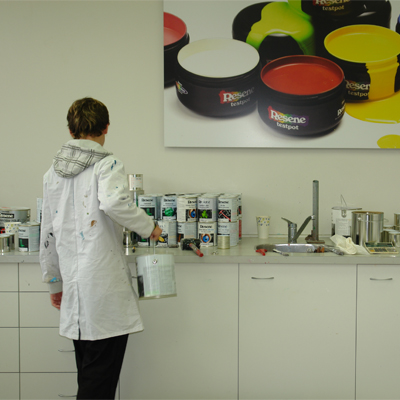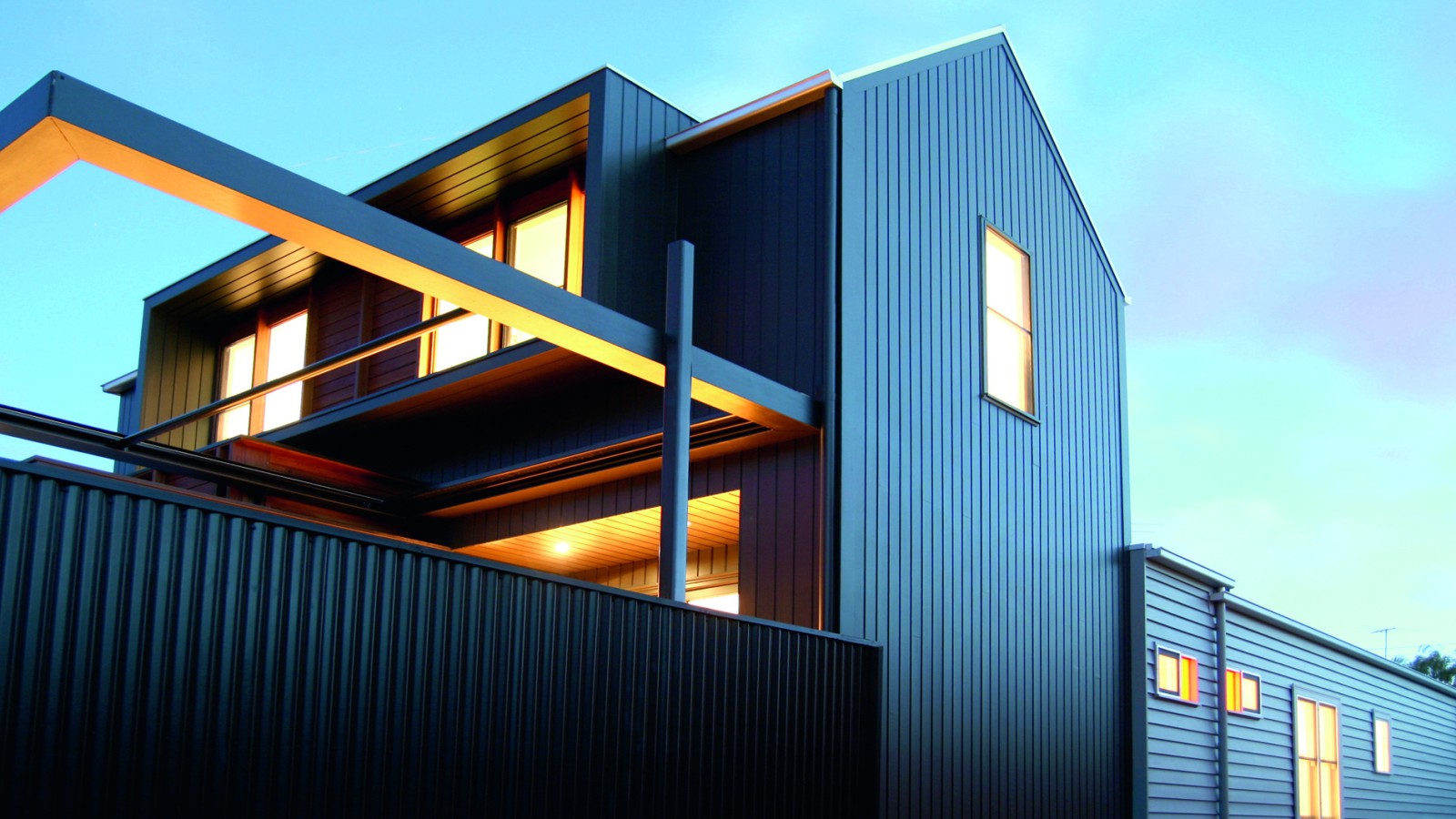In today’s social climate Resene, like many other manufacturers, are coming under increasing pressure to supply sufficient data on our products so that our users can make intelligent, well-informed decisions as to the ‘whole of life’ carbon footprint of the products and systems available to them to specify.
One question was recently posed which, whilst I can’t provide a definitive answer, hopefully I can provide some points of interest. The question is “With the potential of using greater amounts of sustainable raw materials in their formulation, will multiple applications of less durable wood stains outperform, on a footprint basis, a more durable paint system?”
As a kid, our parents drilled into us that ‘comparisons are odious’ – I can also add ‘and damned difficult’! In fact, most small to medium size paint companies are compounders of already manufactured raw materials, the required data for which are often simply not available.
Avid readers of these increasingly irregular missives may remember that part of Memo 138 dealt with the shortcoming of exterior stain systems and the formulation compromises required to make such systems work. The stain ‘type’ we have chosen as a comparator is as discussed in Memo 138 i.e. a low film build composition with a high degree of penetration (over the spring wood) with the first coat, and to a lesser degree with the second coat. Durability would be expected to be about two years in full sun exposure (with an erosion failure mode), and up to five years on southerly aspects and in other fully shaded areas. Failure would probably be via mould damage.
Hopefully I have succeeded in my mission in life, and everyone is aware that paint is not simply paint but a range of materials, some of which represent the acme of the art surrounded by a morass of pretenders and imposters. We have settled on a high quality, mid-sheen finish, as produced by high end suppliers, as our paint comparator.
The difficulties of comparison become immediately apparent when one considers aesthetics. A fully painted, smooth weatherboard looks identical whether it be made of wood, fibre cement, UPVC, pressed metal or whatever! The only way to reveal the endlessly fascinating grain of timber is to use a stain – aesthetically that is a major win for the stain, and it would take the wisdom of Solomon to put a value on it.
The early treatment of the timber to be coated is diametrically opposite for the two systems. Penetrating stains really need a pathway into the timber and find newly milled hardwoods, as well as the latewood on pinus radiata, virtually impenetrable. Some weathering can ‘open up’ the surface of the timber to allow greater ingress. Such weathering needs to be judicious; over-long exposure can lead to an infection by mould spores which then the necessitates a carbon gobbling mould treatment.
This ‘opening up’ of the timber is actually a degradation of timber surface resulting in the formation of a slight mat of cellulose fibres. Such a mat is an anathema to a non-penetrating coating and will result in premature failure. Even short exposure periods require thorough sanding back to a ‘clean’ surface – another carbon gobbler!
I have anticipated that the paint system will last 10 years to first maintenance. It will comprise 35μ of primer/undercoat and two coats of topcoat each adding between 30-35μ. (Subsequent re-paints will however typically only need two topcoats unless a significant colour change is undertaken). Stain will typically be applied in two coats, the first coat producing an application equivalent to about 20μ of dried film with the second coat adding a further 15μ. Recoating may take a little less depending on the aspect and the colour chosen. Anticipating three coating cycles within the first decade, a total film thickness of around 100μ will have been applied.
So, it can be seen that both systems use a very similar amount of material over the period; but what of the nature of the material?
Waterborne paints contain two main classes of materials, resins (or binders) and pigments. Pigments are further divided into ‘prime’ pigments and ‘extender’ pigments. Prime pigments contribute special properties (such as colour) and are virtually all synthetically produced. Extenders, such as talc, chalk and clays are more like the ‘building blocks’ of paint and are all dug out of the ground!
Stains by their ‘semi-transparent’ definition use very few pigments and, because they severely limit penetration, essentially no extenders. The 50-100 gm of pigment per litre used have a very powerful job to do, are highly sophisticated and highly processed.
A white version of our paint would contain about 300 gm per litre of titanium dioxide and about an equal amount of extenders. Titanium dioxide is a highly processed product made by two separate processes, each of which produces a large amount of by-product. The best materials are produced by a coterie of superb producers with a rump of not so superb ones!
Other colours than white may require significantly less prime pigment, but this then typically needs to be compensated for with greater additions of extenders – and the holes in our ground get bigger.
In the area of pigment footprint, the paint will be bigger.
Looking at the aspect of the binders, those used in the acrylic paint lean heavily towards the oil industry, although massive efforts are underway to utilise renewable resources. This works not by finding new molecules within nature which can replace acrylics but by using basic chemicals such as bio-methane or alcohol produced by fermentation as building blocks for their acrylic molecules.
Many times, they may produce an acrylic molecule with only a specific part using a ‘sustainable’ bit!
It is very difficult to ‘track’ where such molecules exist in major resin-manufacturing companies’ logistic systems and how much sustainably derived material any specific batch of acrylic resin contains – indeed if any at all. The Europeans use a system whereby if a company can continuously show that they use a certain percentage of renewable raw material annually in their production line, then they can claim that amount for any product coming off that line. The best producers are around 15%.
Resins used for stains may be quite varied with some using pure acrylics closely related to their ‘paint’ cousins; however, there are certainly a significant amount of vegetable oil containing binders used. This can vary from 100% oil emulsions to waterborne alkyds containing as little as 30%. The balance of these alkyds can be composed of natural glycerine, pentaerythritol (of which one manufacturer has just announced a manufacturing procedure using renewable precursors) and oil industry derived phthalic acid. One could expect an average of about 60% renewables for the average binder, so the stain has the potential to be the hands down winner here.
There is a possible conflict in using vegetable oils for coatings in a time of potentially extreme worldwide shortages of such a vital commodity.
The biggest consideration though is durability and recoat time and cost. I believe that the ratio of 1:3 (stain:paint) is reasonable. I expect preparation for either system not to be too onerous but favouring the paint system. The fact that modern acrylics retain their flexibility for decades has virtually eliminated flaking as a failure mode on anything other than the poorest surfaces. Major sanding is rarely needed with a thorough washing typically being adequate.
For the stain I expect some remedial work for mould, as vegetable oils do remain one of their delicacies. I would also expect some removal of old stain would be required where areas on the same exposed wall have been protected (for example by overhanging features such as soffits) resulting in two different coloured substrates.
Bearing in mind that the cost of materials accounts for only between 10-20% of a contract price, the cost of repaints over our nominated period is significant. Although this may not translate directly to a carbon footprint it does translate directly to an awful lot of pain in the wallet.
While the owner of an easily accessible bungalow may be prepared to put in the undoubted DIY pain for the undoubted aesthetic reward, have a thought for the building owner who has to fork out the significant additional scaffolding costs in order to service a high maintenance system 5 or 6 storeys above the ground.
For all of the good sustainability initiatives that we take at Resene, we long since came to the conclusion that the best contribution that we can make is to design our product for enhanced durability.
This little exercise has not induced by me to change my mind – yet!





























 Most Popular
Most Popular Popular Products
Popular Products



